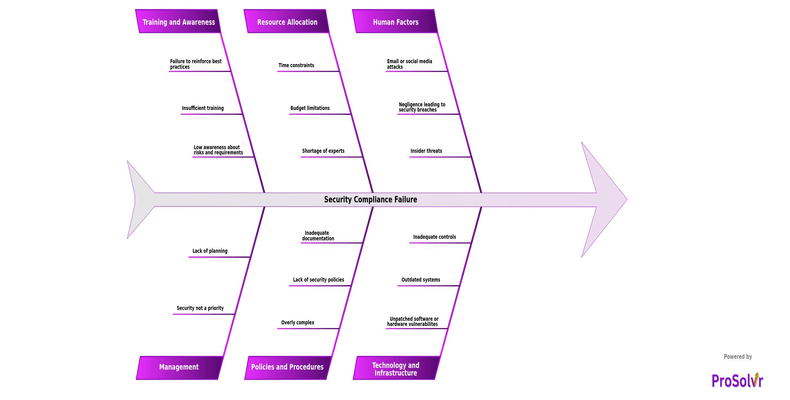Root Cause Analysis of Security Compliance Failure
Security compliance failure can be a symptom of the problem within an organization's framework. It exposes entities to various threats, including data breaches, unauthorized access, and regulatory violations, eroding trust and credibility among stakeholders. To address the root cause effectively, businesses must employ root cause analysis (RCA) methods such as fault tree analysis and failure mode and effects analysis (FMEA).
By defining the problem through a sequence of events and performing a visual root cause analysis, organizations can identify the real root of the issue. Corrective action and preventive action (CAPA) become imperative in preventing problem recurrence and ensuring long-term reliability.
In this context, ProSolvr, the AI-driven root cause analysis tool based on the principles of Six Sigma for quality and reliability, becomes instrumental. Organizations must take assertive action by prioritizing robust security measures, conducting regular audits, and closely monitoring for potential threats. Implementing such measures is essential for preventing problems and safeguarding valuable organizational data, ensuring the long-term viability and credibility of the business process.
Fishbone diagrams, visually illustrate the multitude of factors contributing to Security Compliance Failures. This graphical representation aids teams in comprehending the intricate nature of the problem and pinpointing areas ripe for enhancement.
Who should use the Security Compliance Failures template?
Why use this template?
Overall, anyone involved in ensuring the security and compliance of organizational systems and processes can benefit from using the Security Compliance Failures template.
Draft and create a template for problem analysis in ProSolvr by smartQED.
Curated from community experience and public sources:








